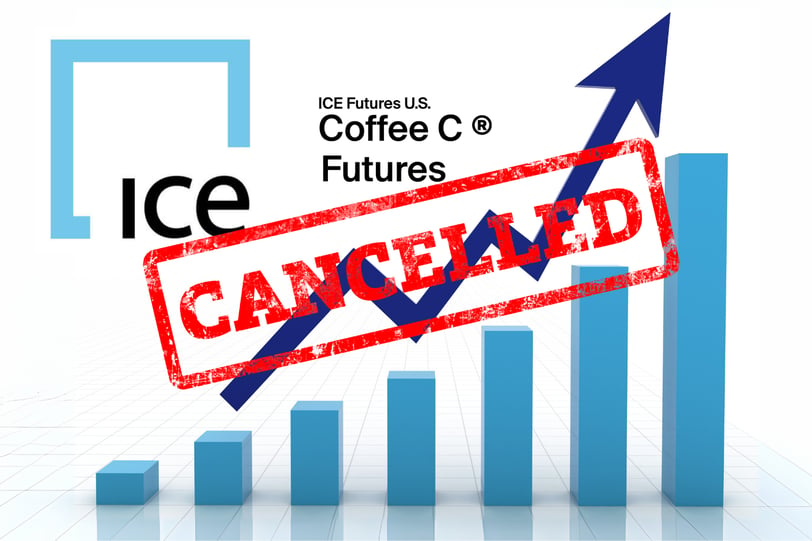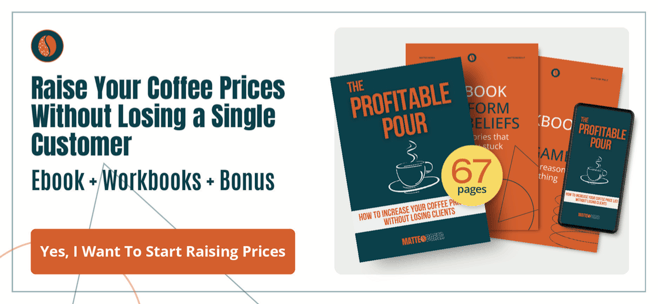The coffee pricing system just changed forever: what it means for your business
On May 29, 2025, ICE announced the end of an era. Here's why this change affects you too
COFFEE MARKETGROWTH
While you were checking your morning emails, something historic happened in the coffee world. ICE Futures officially announced that the Coffee C contract, the one that has determined coffee prices worldwide for decades, will cease to exist in March 2028.
This isn't just technical news for Wall Street traders. It's the signal that a system built on last century's logic is finally collapsing under the weight of modern reality.
The Coffee C we know today quoted coffee in cents per pound, using 60kg bags as the standard unit. A system that worked when the world was simpler, computers were the size of refrigerators, and most coffee traveled on cargo ships with biblical delivery times.
But today? With global supply chains, big data, flexible containers, and prices oscillating 145% in eighteen months, continuing to use that system is like driving a Ferrari with the handbrake on.
Who stays behind pays the price
If you think this is "just" a technical change that concerns big traders, you're wrong. And I'll explain why with a concrete example.
Today, when you need to calculate the price of your green coffee, you always reference Coffee C. Even if you buy specialty with differentials, even if you work directly with producers, that benchmark remains your starting point. It's the sector's lingua franca.
The problem is that this language is becoming increasingly obsolete. While you're doing complex calculations to convert cents per pound into euros per ton, your more evolved competitors are already thinking with more efficient systems.
Those who don't adapt now risk finding themselves in three uncomfortable situations:
First: More calculation errors and margin losses. When you have to manage complex conversions under pressure (and with today's volatile prices, pressure is sky-high), errors cost money.
Second: Exclusion from new commercial opportunities. Big players are already adopting more modern storage and logistics systems. If your technical language is obsolete, you stay out of the conversations that matter.
Third: Growing dependence on intermediaries who speak "the new language" for you. The more dependent you are, the less control you have over your margins.
This isn't catastrophism. It's already happened in other commodity sectors. Those who didn't adapt to technological and regulatory changes found themselves progressively marginalized.
Understanding the new system before others do
Here's what's really happening and how you can turn it into competitive advantage.
The new contract will be quoted in dollars per metric ton instead of cents per pound. This means immediate alignment with robusta contracts in London and total simplification for those operating internationally. No more brain-twisting calculations: a ton is a ton, anywhere in the world.
Official introduction of FIBC containers (big bags) in futures contracts. These are the one-ton bags that many companies already use to optimize logistics and labor costs. Now they become standard in financial markets too. If you already use them, you're ahead. If you don't know them, it's time to learn.
Greater transparency and accessibility for operators of all sizes. The metric system eliminates technical barriers and simplifies access to futures markets even for smaller companies that previously found it too complex to navigate.
But attention: the real advantage isn't technical, it's strategic. While most of the sector will focus on the operational aspects of the change, those with broader vision will understand that this is the moment to completely rethink their approach to purchasing.
Three practical moves you can make right now:
Get familiar with the metric system for your price calculations. Even though the definitive change will be in 2028, start thinking in tons. It will give you immediate advantage in international negotiations.
Explore FIBC containers if you handle significant volumes. Not just for the future, but because they could already reduce your logistics costs by 15-20% today.
Study the futures implications for your purchasing strategy. Even if you don't directly use futures contracts, understanding these mechanisms better will help you negotiate with more strength with your suppliers.
Don't wait for 2028
The Coffee C change isn't a distant deadline. It's an opportunity that starts today.
As I write this article, I have the official ICE documents in front of me that I analyzed for you. Most people in the sector haven't read them yet. Many don't even know they exist. You now know what's happening before others do.
The question is: what will you do with this advantage?
If you want to explore how this change can transform into concrete opportunity for your business, I've prepared a resource that helps you navigate not just this transition, but all the challenges the coffee market is putting in front of you.
[Coffee Crisis Survival Kit]
The free guide I created for coffee entrepreneurs who want to transform market crises into competitive advantages. It includes practical strategies for managing price volatility, regulatory changes, and logistics innovations.
It's not a theoretical course. These are concrete insights born from twenty years in the sector and analysis of what's really happening in the markets. Including what ICE doesn't tell you in their official communications.
The future of coffee is being decided now. And you just discovered you're ahead of the curve.




